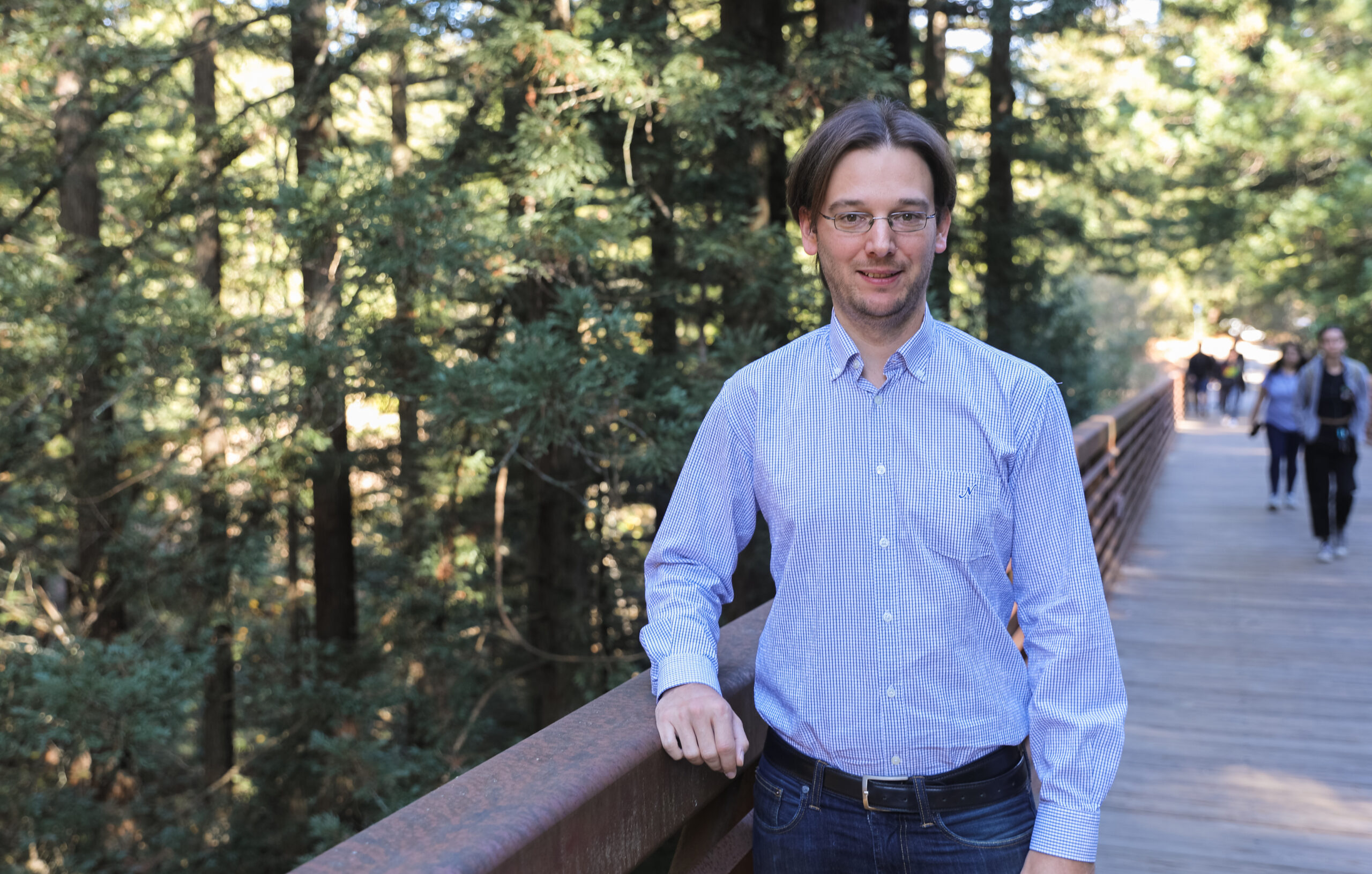One of the most important annual gatherings in the field of theoretical and experimental particle physics will take place for the first time at the University of California, Santa Cruz. At the 32nd annual Conference on Supersymmetry and Unification of Fundamental Interactions, physicists from around the world will converge on campus from August 18 to 23 to offer possible answers to some of the biggest and most vexxing questions about the particle makeup of the universe and everything in it.
The annual conference, known as SUSY, takes its name from the concept of supersymmetry, an overarching theoretical framework that predicts, for every known particle, there is a heavier “superpartner” particle that has yet to be discovered. The framework seeks to make sense of some of the most fundamental mysteries about the universe by proposing a symmetry of nature that would relate two very different kinds of particles: those that make up matter (so-called “fermions” like the electron) and those that carry forces (so-called “bosons” like the photon).
Supersymmetry dictates that an electron would have a partner called a “selectron,” a photon would have a partner called a “photino,” and so on. As in years past, SUSY 2025 will offer physicists a valuable opportunity to meet face to face with peers worldwide, to review and discuss recent research related to supersymmetric theories and other approaches to physics beyond the Standard Model in all aspects. This includes formal theory, phenomenology, experiment, astroparticle physics, and cosmology.
This year’s conference will be hosted by the Santa Cruz Institute for Particle Physics (SCIPP), which has a long history of excellence in particle physics, both in theory and experiment. So we asked the co-chair of SUSY 2025’s organizing committee, Associate Professor Wolfgang Altmannshofer, to translate some of the key topics into more everyday terms, and explain the significance of the conference.
What makes supersymmetry such a big deal?
“SUSY offers possible answers to some big questions in physics. It could explain dark matter, the invisible material that makes up most of the matter in the universe. For example, the superpartner of the Higgs boson could make up part of dark matter. It may also help unify the forces of nature, suggesting that the electromagnetic, weak, and strong forces could all come from a single force at high energies.
“Even though superpartner particles have not been discovered yet, the elegance and explanatory power of SUSY mean it continues to guide both theory and experiment. It is one of our best windows into what might lie beyond the current boundaries of known physics.”
What happens during the scientific programs that refer to Higgs theory, strings, dark matter, and other fascinating topics?
“Researchers from around the world will share new results and ideas on a wide range of fundamental questions. Each day includes plenary talks on topics like the Higgs boson, supersymmetric models, dark matter searches, string theory, early universe cosmology, and precision experiments. Parallel sessions give ample opportunity for junior scientists to present their research to an international audience.
“Some talks will present results from major international experiments including those at the Large Hadron Collider (LHC), while others will introduce new theoretical frameworks, mathematical techniques, or connections between different areas of particle physics.”
What makes UC Santa Cruz such a well-suited setting for this event and the activities that will take place?
“SCIPP members are playing key roles in advancing supersymmetric models, analyzing data from the LHC, and developing new ideas about dark matter. At the same time, the setting is ideal: The redwoods, the ocean views, and the open, collaborative spirit of our campus create an environment that is both inspiring and productive.”
Why are the SUSY conferences considered so consequential in the field, and do they typically result in tangible outcomes?
“It serves as a kind of checkpoint for the global community: a place to share results, test new ideas, and shape future research directions. The outcomes may not always be immediate, but the impact of these conferences is substantial. They help orient the field and mentor the next generation of researchers.”
Organizers are expecting about 170 pre-registered attendees, and in the lead up to the main conference, a week-long pre-SUSY summer school running from August 11 to 15 will offer lectures on advanced topics in particle physics, astroparticle physics, and cosmology to graduate students and early career post-docs.
